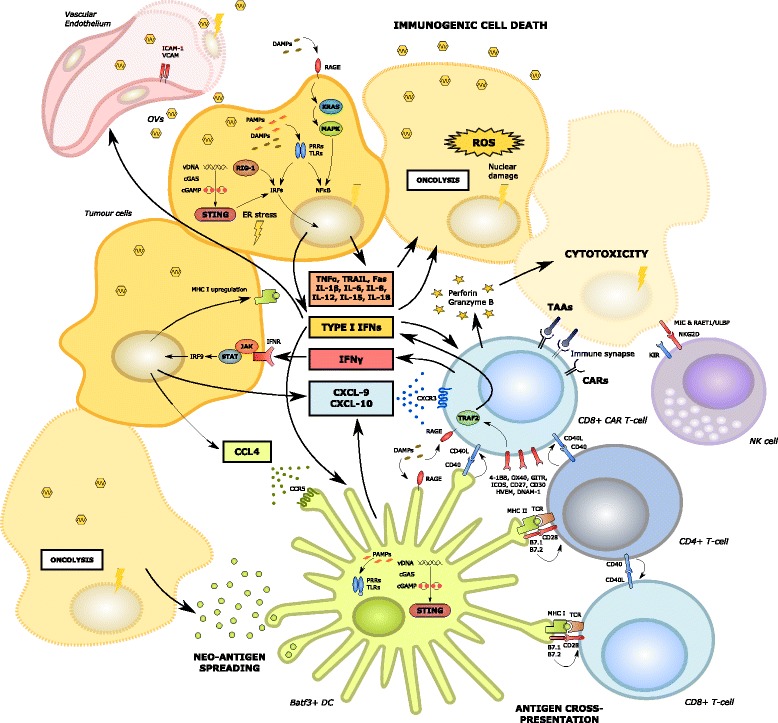Fig. 2.

Oncolytic virus mediated enhanced anti-tumoral immunity, including enhanced CAR T-cell recruitment and effector function. Oncolytic viral infection of tumour cells induces immunogenic cell death (ICD) and a type I interferon response via release of PAMPs and DAMPs (such as HMGB1) acting on Toll-like receptors and RAGE. In addition, ER stress is induced by cGAS-cGAMP-STING pathway activation, ultimately leading to the phosphorylation of IRF and the transcription of type I interferons [13]. The local production of cytokines relevant to the activation of the innate immune system may be augmented by their delivery using recombinant oncolytic viral vectors. Activated DCs are recruited by the local production of CCL-4. In turn, DCs secrete CXCL-9 and 10 which attract CD8+ T-cells including CAR T-cells via CXCR3 [75]. Tumour cells with an intact interferon-sensing JAK-STAT pathway are also able to produce CXCL-9 and 10 and are induced to upregulate class I MHC [77]. Oncolysis induces neo-antigen spreading, enhanced DC function and antigen cross-presentation leading to the activation of anti-tumoural CD8+ and CD4+ T-cells within the TME [75]. The latter interact with CAR T-cells in a supportive manner, potentially via the expression of CD40 and other co-stimulatory molecules [141]. Oncolytic viral infection of local vascular endothelial cells may also induce the upregulation of adhesion molecules such as ICAM and VCAM
